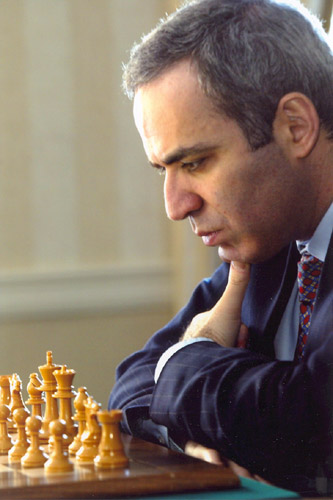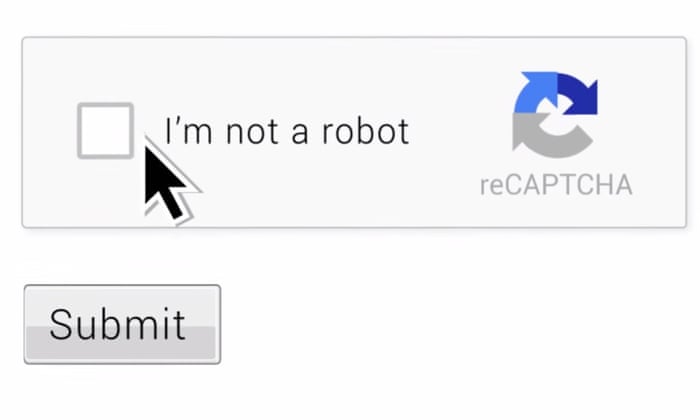1997
When Deep Blue defeated Garry Kasparov in chess in 1997, it was a defining moment in the history of machine learning. In intellect and mind games, the supreme facility of artificial intelligence was no longer in doubt. It was only a matter of time for efficient machines to supplant imperfect human beings in matters of work.
 |
| Kasparov. (Photo) |
That Karel Čapek's R.U.R.: Rossum's Universal Robots existed in two Filipino translations confounded me. The first translation was made by Rogelio Sicat. According to the introduction by Luna Sicat-Cleto, the translator's daughter, the translated play was produced in 1987 in the Faculty Center of the University of the Philippines Diliman, with Aureaus Solito directing. It was published in book form more than 30 years later, in 2021, by Ateneo de Naga University Press through the assistance of Embassy of the Czech Republic.

The afterlives of afterlives
The second Filipino translation of R.U.R. was done by Guelan Varela-Luarca, published in 2016 by Central Book Supply. It was based on the English version by Claudia Novack. I posted some notes about the play in Varela-Luarca's translation here.
Suffice it to say that I loved both the book covers of the two translations. The chess board–like cover of the Sicat translation and the uniquely colored blue robot in the Varela-Luarca translation (presumably Radius, the name of the "woke" anarchist robot who affected all other robots around him at a certain radius).

The Varela-Luarca version being a Filipino translation of an English translation begged the question, was the Sicat translation made from the original Czech language? Very likely not. I hoped the name of the English translator was credited in the book. In Sicat-Cleto's introduction, she quoted Walter Benjamin's famous essay on the task of the translator (translated by Harry Zohn), specifically the famous quote about translation as the afterlife of the original work. This is simply because of timing: "the important works of world literature never find their chosen translators" during the publication date of the original work. The translators came later. (But how about the "non-important works" of world literature, one wonders.)
Since Sicat's translation was likely based on an English translation, his work was in a way 'the afterlife of an afterlife'. It was still based on the original but mediated by the compositional choices and decisions of another translator, a go-between. The task of the publisher was to identify and credit the source text of the translation in the published book. Based on my online investigation, Sicat most likely based his work on the translation by Paul Selver.
Since I no longer owned the Varela-Luarca translation (because I gave it away) and I only have a vague memory of the quality of his translation, I could not make a comparison with the Sicat translation. I did remember enjoying the ideas communicated by the V-L translation. Let us just say that both books were perfect vessels of Čapek's provocations, at least enough for a blogger to spend time posting something without consulting ChatGPT while lounging on a wing chair.
All I can say about the flavor of the Sicat translation, since it was still fresh from my mind, was that it pushed the right buttons and switches for me (pardon the robotic pun). Sicat did not translate all English words into Filipino, making the work natural-sounding since Filipinos practically speak in Taglish (Tagalog-English mix) then and now. His idiomatic choices in 1987 still rang true and fresh after more than 30 years.
The automaton and the puppet master
Čapek's thought experiment was well developed; his general ideas about robot-ness and robot-ship prefigured a lot of things. His scenes efficiently sketched the relevant debates on the role of robots in a work-ridden, parasitic, capitalist society. He went beyond surface speculation to depict the full apocalyptic consequences of his Marxist fairy tale.
In an early scene of the play, Helena Glory, who visited the R.U.R. robot factory and spoke to General Manager Harry Domain, failed a variant of the Turing test, so to speak. She mistook the other managing officials of R.U.R. for robots.
HELENA: (Kay DOMAIN) Sabi mo kangina'y mga robot lahat ng iyong assistant?
DOMAIN: Oo. Mga clerk iyon. Pero hindi mga manager. Bayaan mong ipakilala ko sila, Miss Glory. Ito si Fabry, chief engineer ng Rossum's Universal Robots. Si Dr. Gall, head ng physiological department. Dr. Helman, psychologist-in-chief para sa training ng mga robot. Jacob Berman, general business manager, at Alquist, enkargado ng mga bilding ng Rossum's Universal Robots.
Increasing automation and mechanization of labor (i.e., the flowering of AI) will make clerical, administrative, and blue collar jobs obsolete according to industry forecast. In Čapek's words: mawawala ang mga artisano, ang mga clerk, ang mga minero ng uling, at bantay ng makinang ari ng ibang tao. Those in managerial positions like the committee of men behind the R.U.R. company will somehow be spared.
By the third act of the play, the use of omnipotent robots for the war machinery of nations took center stage. More than a hundred years later, in 2023, it anticipated the United Nations Secretary-General's dire prognosis.
“The malicious use of AI systems for terrorist, criminal or state purposes could cause horrific levels of deaths and destruction, widespread trauma and deep psychological damage on an unimaginable scale,” Guterres warned. “Generative AI has enormous potential for good and evil at scale. Its creators themselves have warned that much bigger, potentially catastrophic and existential risks lie ahead. Without action to address these risks, we are derelict in our responsibilities to present and future generations.”
Who is to blame in this terrific state of affairs? Let's return to our favorite German thinker Walter Benjamin (who created an obvious precursor in Čapek) whose theses on the philosophy of history were grounded in a materialist and technological approach to history. Benjamin described a storm blowing in from Paradise (thesis IX) which violently kept the wings of the angel of history wide open such that the angel cannot maneuver them and thus was forcefully thrown off into the future. This storm, according to our philosopher, is what we call progress.
At the climax of the play, the droning sound of a multitude of rebelling robots attacking the steel fence, the last defense of the surviving humans, was likened to a storm.
Progress (i.e., economic progress), whether backward (debilitating) or forward (enhancing), emanated from capitalism. Alquist the R.U.R. company chief worker blamed science, engineering, and everyone involved in R.U.R.
for the revolt of the robots and their purging of humans. He blamed the trinity of greed, profit, and progress (Sa ating kasakiman, sa pakinabang, sa progreso). Ironically, Alquist's life was spared by the robots because, being chief worker of the company, he was considered by Radius as a robot-like laborer whose sole purpose in life was to work and feed the engine of progress.
The victory of Deep Blue over Kasparov the chess grandmaster was a symbolic turning point of Anthropocene progress hurtling humanity toward the terminus of civilization. Benjamin's thesis I captured Čapek's human-robot relations of production.
The story is told of an automaton constructed in such a way that it could play a winning game of chess, answering each move of an opponent with a countermove. A puppet in Turkish attire and with a hookah in its mouth sat before a chessboard placed on a large table. A system of mirrors created the illusion that this table was transparent from all sides. Actually, a little hunchback who was an expert chess player sat inside and guided the puppet’s hand by means of strings. One can imagine a philosophical counterpart to this device. The puppet called “historical materialism” is to win all the time. It can easily be a match for anyone if it enlists the services of theology, which today, as we know, is wizened and has to keep out of sight.
Benjamin's first twaddle on the philosophy of history considered an automaton as puppet in Turkish attire. His setup of the automaton system was like this:
little hunchback/ expert chess player (= puppet player) --> automaton/ puppet in Turkish attire and with hookah in mouth (= historical materialism)
The mastermind behind the puppet (automaton) was the little hunchback (expert chess player). In fact Benjamin equated the automaton puppet (or machine or robot, in another form) with historical materialism – the engine of progress – itself.
Čapek's R.U.R. predated Benjamin's theses (completed in 1940) by two decades, and yet R.U.R. already dramatized the reversal of roles of the puppet and the puppet player. The controlling hunchback was superseded by the automaton-puppet which had fully mimicked and then far surpassed the former's intelligence and ability.
Ang tibok ay parang sa isang ninenerbiyos na tao. Alam mo? Sa tingin ko'y hindi na robot ang tarantadong iyon.
The organizing principle of historical materialism (which gave rise to the robots) was grinding work, servility, and slavery. But winning all the time, the puppet master and the puppet collapsed in on itself, becoming one. Winning all the time, the automaton (historical materialism) consumed itself.
Under the rubble
For all the blood spilled and violence and destruction enacted during the suspenseful confrontation between humans and robots, the Czech dramatist was still a humanist. He hid a flower under the pile of debris. As robots were children (products) of human ingenuity, they presumably had the residue of humanity in them. Being programmed to acquire the best qualities of their programmer, the programmed became human-like to the point of mastering chess and invading the role of the puppet master.
Wala nang kakatwa pa sa isang tao kung di ang kanyang imahen. (There's nothing more strange in humans than those created in their likeness). The takeover was complete. The play ended with a retelling of the Book of Genesis, complete with a prototype Adam and a prototype Eve. All that's missing is an artificial apple and a prototype snake.
In a future distant, a new batch of automatons will challenge the human-defeating automaton hegemon. A new chess player will emerge to defeat the machine and be declared champion. And on and on, reenacting the cycle of storm called progress.

September 2023 is Czech lit month at Winstonsdad's Blog.

No comments:
Post a Comment